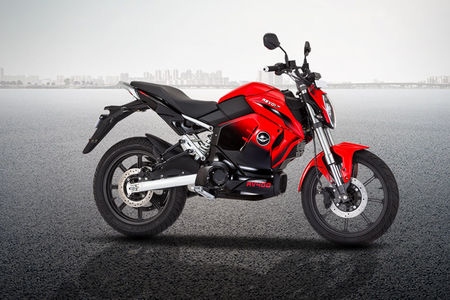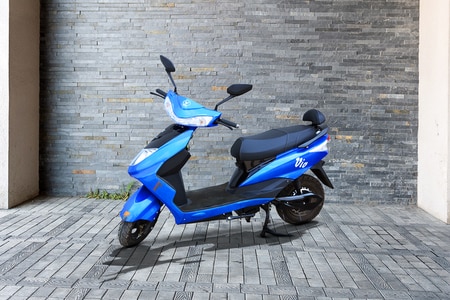How Ford, GM and Stellantis misread UAW triggering historic strike
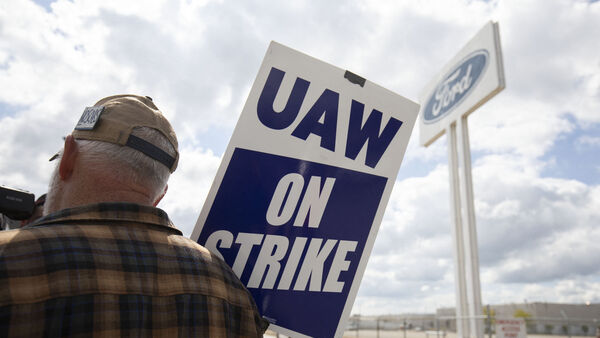

Detroit automakers survived a pandemic and semiconductor shortage. They were embracing a historic transition to the electric-vehicle era, underwritten by billions in subsidies from the Biden administration. Profits were rolling in.
Then came Hurricane Fain.
The walkout led by United Auto Workers President Shawn Fain at three General Motors Co., Ford Motor Co. and Stellantis NV factories is no ordinary labor-versus-industry clash. The 54-year-old former Chrysler electrician is pushing for a dramatic reset of the wage scales and working conditions that would meaningfully change the economics of car manufacturing. He’s taken aback executives with eye-watering demands for 40% pay increases over the next four years and a 32-hour work week — unheard of in American manufacturing.
Also check these Vehicles
Just as jarring has been Fain’s unconventional negotiating style. Instead of following decades of precedent and targeting one company at a time, Fain has taken on all three companies employing 146,000 union members at once. He’s inflicting significant damage by disrupting truck and sport utility vehicle output, while taking pains not to burn through too much of the UAW’s strike fund. He’s left himself the option to bring down even more lucrative pickup plants, if need be.
Two days before the strike deadline, Fain even stood up auto industry royalty, failing to show up for a bargaining session with Bill Ford, the great-grandson of Henry. “We’ve never seen anything like this," said Ford Chief Executive Officer Jim Farley.
The UAW’s aggressiveness in many ways reflects the more assertive mood of the American worker, who’s anxious about job security in the age of artificial intelligence and angry about an ever-growing wealth gap. In this summer of strikes that’s seen Hollywood writers and actors walk off their jobs, and workers at companies as varied as Starbucks, Amazon, Apple and Microsoft all vote to unionize in the last two years, the UAW drama has taken on broader significance.
Fain’s combative stance is risky. If workers sacrifice for months, throwing their lives and others’ into disarray, only to end up having to accept something much closer to what the companies have been offering, they could serve as just the sort of cautionary tale managers use to try to dissuade workers from unionizing in the first place.
The UAW strike also is perilous for President Joe Biden, who’s made building an EV and battery manufacturing industry a pillar of his economic agenda. Can he live up to his own billing as the most pro-union president in history, without compromising the competitiveness of the US auto industry against lower-cost rivals, led by China?
“If the union has taken a more militant turn and is punished for it successfully, that will intimidate workers across the board," said University of Chicago historian Gabriel Winant. “If they win, it will augment the message that is already circulating with greater frequency: that now is the moment that workers have leverage."
Leverage has been in short supply on the labor side of Detroit bargaining tables for decades. The once-dominant GM, Ford and Chrysler faced one crisis after another, starting with the 1970s oil price shock and emergence of more fuel-efficient compact cars from Germany and Japan. Chrysler needed a bailout to make it to the 1980s, when import quotas led the likes of Honda and Toyota to set up plants across the country that the UAW tried and failed to organize.
Fain joined the union at a casting plant in Kokomo, Indiana, in 1994. In the decade that followed, US auto worker wages stagnated, then began to steadily decline.
Plant closures and concessions by the UAW — which included setting up a union fund for retiree health care and the creation of lower-tier wages for new workers — weren’t enough to keep GM and Chrysler out of bankruptcy in 2009. But those givebacks and the $80 billion the Obama administration disbursed in another bailout cleared a path for the companies to exit Chapter 11 and quickly recover.
Also Read : US auto workers strike against Ford, GM and Stellantis continues for third day
The union failed to capitalize on the carmaker’s improving fortunes to the satisfaction of many workers. Labor talks were largely opaque affairs in which UAW leaders stashed themselves at the union’s headquarters — called Solidarity House — in downtown Detroit and negotiated with management behind closed doors. They would emerge after a couple of months with tentative agreements that in recent years included steady, single-digit pay raises, but also kept in place lower wages for new hires. “We don’t bargain in the media" was a common refrain from leaders on both sides.
Enter Fain, the first UAW president to be directly elected by the membership, after two of his predecessors and their underlings did prison time for spending union funds on golf clubs, luxury lodgings and steak dinners with champagne and cigars.
Months after his swearing-in this March, Fain bucked convention by not holding handshake ceremonies usually attended by the three companies’ CEOs and union leadership to kick off contract negotiations.
Imposing ‘Brutality’
Attempts by management to get a read on their counterpart privately didn’t go well. While Paris-based Stellantis CEO Carlos Tavares has largely deputized contract negotiations to his chief operating officer for North America, he did meet with Fain once before bargaining began.
According to Fain’s telling, Tavares complained about what he called the “brutality" of emissions regulations that leave the company with no choice but to slash costs to afford the EV transition.
“He used the word brutality probably 40 times in our conversation," Fain later said in an interview with Bloomberg. “Our workers have had a brutality imposed upon them for the last 40 years — closed plants and having to uproot their lives."
When Stellantis and UAW leadership gathered for the second time last month, Mark Stewart, the COO for North America, wasn’t physically present — he joined via videoconference from Acapulco, Mexico, where he has a second home.
This was taken as an affront by some of the same workers called back to factory floors early in the pandemic to help get production lines back up and running, while salaried employees worked from home. Union representatives were coming to negotiate in a half-empty complex at the company’s sprawling North American headquarters in Auburn Hills, Michigan, a reminder of the flexible return-to-office policy for white-collar employees.
The UAW’s deft new communications team — which includes veterans of Senator Bernie Sanders’ runs for the Democratic nomination for president — seized on the faux pas. Pro-union social media accounts later spread footage and photos of a sunglasses-wearing Stewart smiling by the beach. He made it to the next meeting.
The in-your-face messaging has extended to Fain’s almost-daily updates sent out to members. He’s bandied the companies’ offers about in Facebook Live addresses and decried their shortcomings, even throwing one in a wastebasket. This has forced the companies to be more open about their proposals for record raises and the return of benefits lost during the financial crisis.
All the while, Fain has made gospel of criticizing the companies’ CEO pay packages and multibillion-dollar share buybacks.
While Fain has blamed the companies for dragging their feet, he and his team have in turn been accused of taking their time to respond to offers.
“I don’t know what Shawn Fain is doing, but he’s not negotiating this contract with us as it expires," Ford’s CEO Farley said before the strike began.
GM’s ever-composed CEO Mary Barra was, in her words, “extremely disappointed and frustrated" by the strike, which she said didn’t need to happen. A lifer at the company who started as an 18-year-old co-op student, Barra, now 61, told Bloomberg Television last week that her father — a union die maker — would have voted yes on GM’s latest offer.
No-Shows and Nos
Ford called in Executive Chair Bill Ford as time was running out on the company’s contract with workers to personally present what management considered the most generous proposal it’d ever offered: a 20% raise, restoration of cost-of-living-adjustment payments and a significant expansion of paid time off.
When Bill Ford, Farley and about a dozen executives arrived at the conference room on the second floor of Ford’s headquarters in Dearborn, Michigan, they were greeted at the door by UAW Vice President Chuck Browning, who explained Fain wasn't coming.
“Why not?" Bill Ford asked. Browning was vague on Fain’s whereabouts, according to people who were there, but discouraged the executives from reading anything into it.
Inside the room, more than 70 union bargaining officials sat three deep in chairs along the perimeter. Ford eased tensions by fielding questions about the big win the week before by the Detroit Lions, the football team his family owns. He and Farley walked through their offer for about 20 minutes, and Ford closed with: “I can look all of you in the eye and say I believe this is a fair offer."
The union turned it down.
Farley was still hot about Fain’s snub a day later. “Bill Ford, the chairman of the company, like only the fourth person to lead the company since Henry Ford founded our industry, he was there," Farley said. “And Shawn didn’t come."
The next day, the morning before contracts were set to expire at 11:59 p.m., Barra made the trip to Solidarity House along with GM President Mark Reuss, manufacturing chief Gerald Johnson and others with an offer in hand.
Just as had happened the day before at Ford, Fain stood them up. Barra and her team left, regrouped in the evening and brought the offer back when Fain would give them an audience. The proposal was similar to Ford’s, with a 20% raise, and it too was rejected.
The union lowered its raise request to 36% earlier in the week and wasn’t willing to budge further, according to a person present for the Ford meeting, who asked not to be identified. The UAW negotiators have been willing to back off from their ask for a four-day work week, but only in exchange for more paid time off.
Ford calculated that the UAW’s first counterproposal would still more than double its labor costs and rejected it, calling the terms unsustainable. The company didn’t see the offer as serious, but rather a tactic by the union to appear to have given the companies an opportunity to avoid a strike.
At midnight, 3,300 workers at Ford’s Michigan Assembly Plant in suburban Detroit stopped making Bronco SUVs and Ranger pickups and walked off the job. Another 9,400 workers put down their tools and picked up picket signs at a Stellantis Jeep plant in Toledo, Ohio, and a GM pickup plant in Missouri.
Biden, who repeatedly downplayed the likelihood of a strike, has at times spoken glowingly of Big Three executives. His praise of GM’s Barra for what he described as leadership with respect to EVs irked Tesla’s Elon Musk to a great degree.
After the walkout, however, Biden spoke at the White House about the “extraordinary skill and sacrifices of UAW workers" and the amount of money the companies have raked in the last few years.
“Those record profits have not been shared fairly, in my view, with those workers," Biden said. He touted a just-released Treasury Department report on how unions benefit the economy, by increasing incomes, home ownership, retirement savings and benefits including sick leave and child care.
More Americans are coming around to this view, with support for unions rising from a historic low in 2009, according to Gallup polling. A Morning Consult survey taken before the walkouts found that US adults would back the UAW striking by a 2-to-1 margin.
“This is political dynamite — positive dynamite — for Joe Biden," said Andy Levin, a former Democratic congressman, union organizer and chief workforce officer of Michigan. “He can support workers who are in motion, fighting to save the middle class of this country, and that’s a fight that he wants to be involved in."
Of course, support for the union’s cause may be tested by repercussions Fain didn’t see coming. GM and Ford have announced layoffs of non-striking workers, citing what they’ve described as spillover effects of the three-factory walkouts. The UAW said those members won’t go without income.
What Bloomberg Economics Says
A month-long localized strike would reduce payroll by 13,000. If that escalates, a strike involving all 146,000 union members would most likely lead to a negative nonfarm payroll print in October. And while jobs will rebound by the same amount after the strike, the uncertainty it creates and the forgone production could heighten recession risks just when they are already elevated from past rate hikes.
Most, including Bloomberg Economics, still expect forecasts from the September Fed meeting to indicate another rate hike is coming. But a full-scale UAW strike — and the looming government shutdown — may just push Powell & Co. to either postpone or jettison that last tightening move.
— Anna Wong, chief US economist
Marc S. Robinson, a principal at game-theory consultancy MSR Strategy and a former GM executive who was involved in labor relations, said that while the UAW striking was foreseeable, a way out is much more difficult to predict.
“There’s just nothing to suggest the strike is going to end anytime sooner than Halloween," he said. “That’s when the membership starts getting antsy about being out of work."
Fain will need to deliver agreements he can leverage into a more compelling case for workers at carmakers and battery companies the union hasn’t organized. Otherwise, Detroit risks starting the EV age in a position similar to the one they were in when the oil crisis hit half a century ago: stuck with labor costs that put Motor City companies at an untenable disadvantage.
“Breathing down the neck of the Big Three are the so-called foreign transplants and Tesla, which are eating up a bigger part of the market and remain unorganized," said William Gould, a chair of the National Labor Relations Board under President Bill Clinton and professor emeritus at Stanford Law School. “That’s the Achilles’ heel of organized labor."







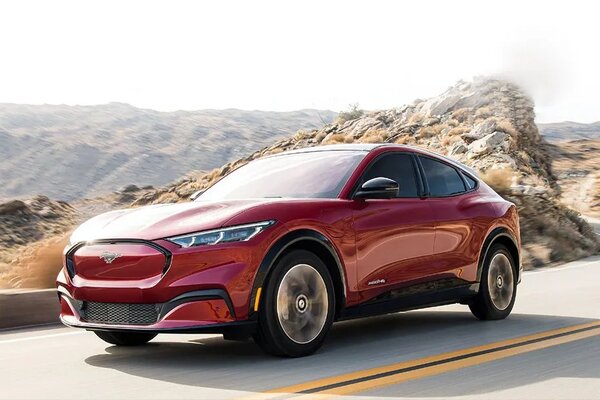

 2596.0 cc
2596.0 cc Diesel
Diesel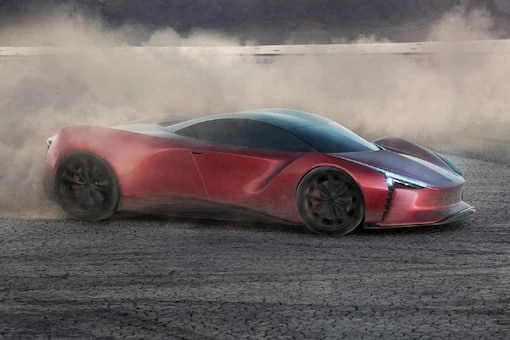
 120 Kwh
120 Kwh 700 km
700 km
